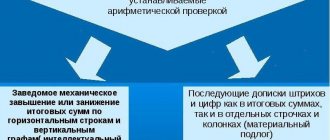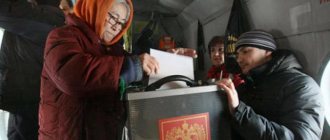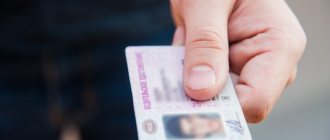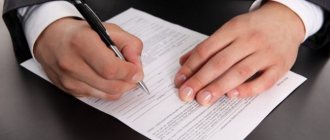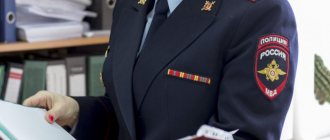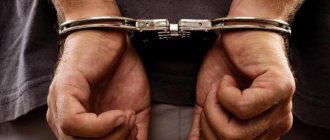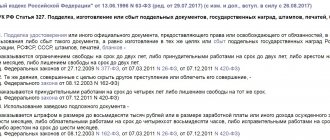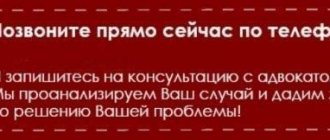Forgery of documents is a criminal offense punishable by Article 327 of the Criminal Code of the Russian Federation. Moreover, not only the production of “fake” papers is punishable, but also their use, acquisition, storage and distribution. For committing such actions, a citizen can receive up to four years in prison.
Over the years of work, criminologists have learned to accurately identify counterfeit products. Below we will talk about the types of document forgery and the main signs by which you can recognize “fake” paper.
What is a complete fake?
We are talking about the production of all the main parts of the document. In this case, both the form itself and the details are forged, including seals, stamps, signatures, etc. Most often, documents that are prepared on blank sheets of paper are forged in this way. We are talking about certificates, certificates, certificates, etc. Complete forgeries of documents produced by printing are much less common.
At the moment, there are a number of ways to protect documents from forgery. The most popular are:
- technological;
- chemical;
- printing.
The use of modern technologies does not allow complex documents to be completely forged in artisanal conditions. Therefore, a fake can be distinguished by a number of signs.
Examination of document text in case of forgery
Situations where fake documents are provided to official authorities are not uncommon. As part of the examination of documents, a study of its purpose, the authenticity of the form, text, and details is carried out.
The signature, photographs, seal impressions, stamps, as well as the suitability of the content for the purpose are examined. If there is any doubt about the authenticity, an analogue of the original document is provided. In forensic research, fraud is divided into intellectual and material. Material forgery includes the introduction of false information into a previously drawn up document, complete or partial imitation. According to the time of forgery, we consider the absolute age (the time of existence of the document from its foundation) and the relative age - the time of action in a falsified form. Intellectual – drawing up a document with deliberately false information.
How to detect a partial fake
Complete falsification of documents is extremely rare. As a rule, we are talking about a high quality counterfeit, which only a professional can recognize. Such papers are produced using professional equipment. Therefore, differences from the originals arise due to imperfect technologies, the use of other materials, etc.
Partial forgery is much more common. Here the changes may be minor, suggesting additional printing of words or even letters. We will talk about the most common methods of partial counterfeiting below.
Erasing
Erasure is the mechanical removal of graphic characters present on documents. The distinctive features of such an intervention are:
- disruption of the background grid;
- change in the surface layer of paper (especially noticeable on gloss), ruffled fibers);
- reducing paper thickness in areas of erasure;
- remnants of dye in the locations of the eliminated text;
- the smudged ink of the new text that was applied over the erasure.
Often, in order to disguise the erased area of the document, it is smoothed with a hard object. The lines of the background grid can be drawn on. In this case, the erasure can be detected by examining the document in oblique, diffuse, transmitted light or infrared rays. It is also possible to recognize a fake by using magnifying glasses and a microscope, which can reveal fiber breaks.
To restore the original text, a specialist can photograph invisible areas with filters in oblique light. It is also possible to use the diffuse-copy method.
Etching
This is the effect on printing ink through chemical reagents. To falsify documents in this way, various oxidizing agents, acids, and alkalis are used. As a result, the dye is either washed off or discolored. Chemical reagents have an effect not only on the text. The paper also suffers - changes are made to the background grid and other important details of the document.
The main signs of etching include:
- disappearance of gloss;
- the paper becomes rough;
- the shade of the sheet changes (borders and colored spots appear in places of etching);
- The color of the background grid changes;
- due to the violation of the paper sizing, the strokes of the new text become blurry;
- partial discoloration of records occurs because they are exposed to an etching substance that is partially preserved in the thickness of the paper;
- the sheet becomes brittle and fragile, tears and cracks may form on it;
- When viewed under ultraviolet rays, the luminescence of areas with etched text is noticeable.
To detect the presence of chemical etching, optical magnifying devices, oblique lighting, light filters, ultraviolet luminescence photography, etc. are used.
If dissolution was carried out by washing away, then barely visible remnants of the original text will be present on this section of paper. In this case, their general coloring is observed.
To restore etched text, the document is photographed in the infrared and ultraviolet zones of the spectrum.
Additional printing and addition
Reprinting is the addition of new characters, words or part of typewritten text. Adding is adding characters, letters, words or parts of text manually. In most cases, such changes are small in scope, but they can significantly distort the meaning of the original text. Most often, by adding numbers or words, the amounts in statements, receipts and invoices are changed. Last names, dates of paperwork, etc. can also be falsified.
The addition can be identified by the following signs:
- the symmetry of the text is broken;
- general and specific features of handwriting in the compared parts of the text are different;
- the possibility of blurriness of those strokes that were made along the folds of the document, differences in color shades, etc.
You can identify an overprint by the following signs:
- differences in defects in the mechanism and font are noticeable if additional printing was done using another typewriter;
- the horizontal position of printed characters in a line does not match;
- when examined under ultraviolet rays, different luminescence of signs in original and pre-printed details is noticeable;
- difference in the design and size of identical printed characters, differences in the color of the ribbon dye.
It is more difficult to detect a fake if the text was printed on the same machine. Then the experts check the intensity of the dye in the strokes, the matches between the lines of the main and pre-printed text, etc.
Have a question for a lawyer? Ask now, call and get a free consultation from leading lawyers in your city. We will answer your questions quickly and try to help with your specific case.
Telephone in Moscow and the Moscow region: +7
Phone in St. Petersburg and Leningrad region: +7
Free hotline throughout Russia: 8 (800) 301-39-20
Text correction
We are talking about partial changes in documents by converting some characters into others. You can recognize a correction by thickened strokes, double lines, and the presence of extra elements that remain from the previous sign. In some cases, these elements are erased, which entails the appearance of signs of erasure.
To identify text corrections, additional printing and additions, specialists use light filters, magnifying devices, and examine the chemical composition of dyes through chromatography and spectral analysis.
Replacing parts of a document
This type of forgery is used in ID cards. We are talking about passports, military IDs, work books. The following signs indicate a fake:
- the page numbering is incorrect;
- in places where sheets are fastened, the integrity of the paper layer is damaged;
- discrepancy between the number and series of the document, differences in page sizes;
- different luminescence of dye and paper;
- In the text fragments there is a noticeable discrepancy between the methods and types of printing.
The most common way to replace part of a document is to re-stick a photo card. The photograph is changed in passports, driver's licenses, etc. Replacement can be done either entirely or with the removal of the emulsion layer. When a photo is pasted in, the missing parts of the metal or mastic seal are added using pressure or additional drawing.
The following evidence indicates that the photograph has been pasted together:
- discrepancy between the letters of the text in the seal imprint and the document paper (different design, size of letters);
- peeling of the surface layer is observed at the edges of the paper;
- the photo card is pasted with an offset;
- two different types of glue were found under the photo;
- non-standard size, scale violations, etc.
Some documents are modified by pasting in fragments of the same papers. Such actions are performed with the aim of changing the number or series. We are talking about counterfeiting bonds, lottery tickets, and securities.
You can identify a fake by the following signs:
- unevenness of fiber disintegration and sheet thickness;
- differences in color and shade;
- there are traces of glue along the edges of the insert;
- There is a noticeable discrepancy between the lines of the background grid.
To identify a fake, a microscope and a UV lamp are used.
Forgery of signatures
Most often, criminals copy signatures from documents or resort to graphic copying technology. However, the most experienced fraudsters are capable of technical counterfeiting. It is performed in the following ways:
- squeezing;
- use of carbon paper;
- wet copying;
- using a printer;
- redrawing in the light.
Squeezing, redrawing against the light and using carbon paper are the simplest methods of counterfeiting. They are similar to each other and involve a repetition of the lines with which the original was made. You can detect such a fake by using a magnifying glass with low magnification. You should pay attention to the following signs:
- the presence of strokes of copy paper;
- kinks, tortuosity of individual strokes, underdrawing, unjustified stops of the writing medium;
- depressed strokes not covered with dye;
- traces of preliminary pencil preparation, if the forgery was made by copying against the light.
Wet copying technology involves transferring the dye of a genuine signature onto a fake document. For this, a special sticky material is used. It is pressed against a document with a genuine signature, after which the mirror image is copied onto the forged document.
Such a fake can be recognized by examining the signature under a microscope. In this case, changes in the structure are observed: unclear edges, low intensity of the dye, etc. If the signature was additionally circled, then traces of two dyes can be seen on the paper.
Types of falsifications
Most often, documents are falsified through the following operations:
- Forgery of a signature on behalf of a responsible person authorized to certify this document.
- Addition (additional printing) of data to the text of the document - individual characters or entire sheets.
- Forgery of seal and stamp impressions.
- Artificial discoloration of ink under the influence of UV rays.
Among the material counterfeits, the most common are etching, additional writing, additional printing, re-gluing of photos, replacement of pages and fragments. To transfer a document to the category of unreadable, it is deliberately damaged - it is etched with chemicals, filled with liquids, data is crossed out, washed off with water, and it is exposed to prolonged exposure to sunlight.
